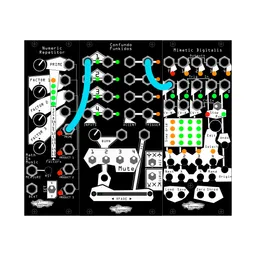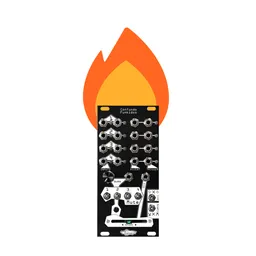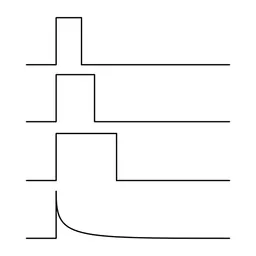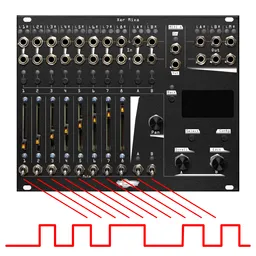Welcome back to Using Stuff Wrong, the series where we use modules for things slightly outside of their original purpose! Today, we’ll be talking about ways to create suboctaves (and other harmonies) from oscillators with clock dividers and multipliers. Shout out to user Mike who emailed in recently with a question about this and inspired this post!
Background: what’s a suboctave?
Sometimes, a plain oscillator just isn’t enough. Many traditional subtractive synthesizers feature a suboscillator for this reason: this divides the frequency of the main oscillator by two, which creates a harmony an octave below the oscillator’s pitch. This can be a great way to beef up a sound. Using an oscillator dedicated to this is fine, but we can instead make use of a utility we probably already have in our case: the clock divider.
Here's an example of the sound we'll be creating. First, a plain saw wave, then we mix in the suboctave generated by our clock divider:
Patching clock dividers for suboctaves
Generally, we use clock dividers to change the frequency of a clock signal. However, a clock divider simply takes in pulses and outputs a different number of pulses based on the divisor we’ve selected. And that means that we can use them to create suboctaves! By simply patching an oscillator into a clock divider, you’ll generate an octave down for each single division (for example, a /2 output will output two octaves below the input). Mix those in with your original oscillator and you’ll have an awesome new sound!

All Noise Engineering clock utilities will run at audio rates, so if you have something like a Horologic Solum, Fractio Solum, or Integra Solum in your rack, you can create suboctaves!
Since clock signals are based on pulses, any signal that comes out of a clock divider will be a square wave. This often sounds great, but remember that it will sound different than most signals you put into the divider. Sometimes I like to use a lowpass filter directly after the clock divider to tame things a little bit before it’s mixed in with the original oscillator.
Beyond octaves
Suboctaves are awesome, but since this is Eurorack, it’s quite easy to break out of tradition and take things in a more experimental direction. All of our clock dividers have unusual divisors: for instance, the Fractio Solum can do pretty much any input-to-output ratio you can think of, which will create much more unusual harmonies.
Let’s try this out: here, we’re using Horologic Solumn to process a saw wave. Each of HS’s outputs are run through a VCA, and the VCAs are modulated with a slow LFO to bring them in and out.

Try it out!
This technique works well with pretty much any raw waveform, and I love using suboctaves on basslines for some extra low end. If you create a cool patch with the techniques we’ve discussed here, tag us on Instagram for the world to hear!






